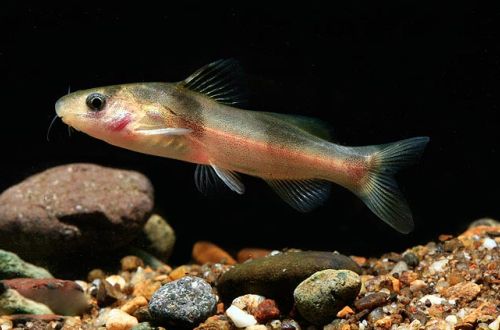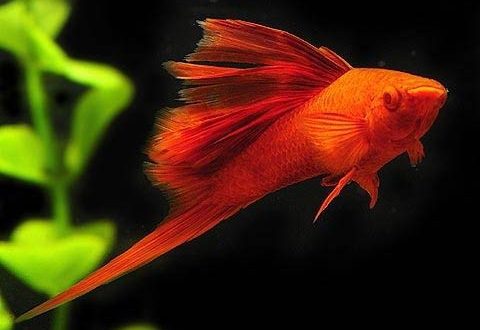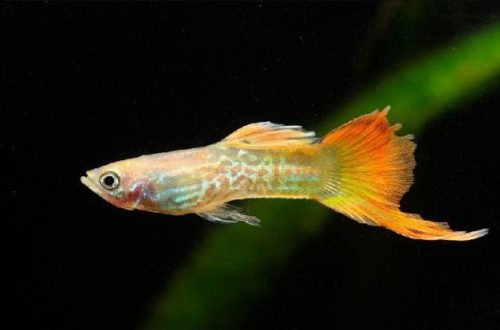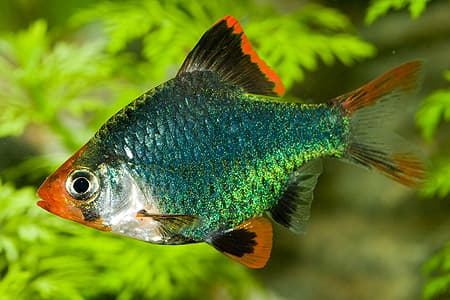
Somik Batazio
Catfish Batasio, scientific name Batasio tigrinus, belongs to the family Bagridae (Orca Catfish). Peaceful calm fish, easy to keep, able to get along with other species. The disadvantages include nondescript coloring.

Contents
Habitat
It comes from Southeast Asia from the territory of Thailand in the province of Kanchanaburi in the west of the country. Considered endemic to the Khwei River basin. A typical biotope consists of small rivers and streams with fast, sometimes turbulent currents flowing through mountainous terrain. The substrates consist of small stones, sand and gravel with large boulders. Aquatic vegetation is absent. The water is clear, except for the rainy season, and saturated with oxygen.
Brief information:
- The volume of the aquarium – from 100 liters.
- Temperature – 17-23°C
- Value pH — 6.0–7.0
- Water hardness – 3–15 dGH
- Substrate type — stony
- Lighting – moderate
- Brackish water – no
- Water movement – moderate or strong
- The size of the fish is 7–8 cm.
- Food – any sinking food
- Temperament – peaceful
- Content alone or in a group
Description
Adult individuals reach a length of 7–8 cm. The catfish has a body somewhat compressed from the sides and a large, blunt head. The dorsal fin is divided in two. The first part is high, the rays protrude almost vertically. The second is low in the form of a ribbon stretching to the tail. The color of the body of young fish is pinkish, turning brown with age. The body pattern consists of dark pigmentation, localized in wide stripes.
Food
An omnivorous species, it will accept most popular foods designed for aquarium fish. The main thing is that they are sinking, since the catfish feeds exclusively at the bottom.
Maintenance and care, arrangement of the aquarium
The optimal size of the aquarium for a group of 3-4 fish starts from 100 liters. It is recommended to keep in an environment reminiscent of the natural habitat. Stones, gravel, several large snags are used in the design. Of the plants, it is worth using only unpretentious varieties that can grow on a woody surface and in turbulent conditions. For example, anubias, bolbitis, Javanese fern, etc. Pumps are additionally installed to recreate the movement of water flows. In some cases, an efficient filtration system can provide internal flow.
Catfish Batazio comes from flowing reservoirs, respectively, needs very clean and oxygen-rich water. In addition to the already mentioned filter, an aerator is among the mandatory equipment. High water quality depends not only on the smooth operation of the equipment, but also on the timeliness of a number of necessary aquarium maintenance procedures. At a minimum, a part of the water (30-50% of the volume) should be replaced weekly with fresh water with identical temperatures, pH, dGH and organic waste (feed residues, excrement) should be removed.
Behavior and Compatibility
Peaceful calm fish, perfectly coexists with other non-aggressive species of comparable size able to live in similar conditions. No intraspecific conflicts were noted.
Breeding / breeding
Successful cases of breeding in an artificial environment are rare. In nature, spawning occurs during the rainy season, when the water level rises and its hydrochemical composition changes. Imitation of such processes will stimulate the spawning state in the aquarium. For example, you can gradually replace a large volume of water (50-70%) over the course of a week while lowering the temperature by 4-5 degrees (to 17°C) and set the pH to a neutral value (7.0). such conditions will need to be maintained for a couple of weeks.
Catfish during breeding do not form a clutch, but scatter eggs in a certain space directly on the ground. Parental instincts are not developed, so adult fish can eat their own offspring. The incubation period lasts about 2 days. After some time, the fry begin to swim freely in search of food.
Fish diseases
Being in favorable conditions is rarely accompanied by a deterioration in the health of fish. The occurrence of a particular disease will indicate problems in the content: dirty water, poor quality food, injuries, etc. As a rule, eliminating the cause leads to recovery, however, sometimes you will have to take medication. Read more about symptoms and treatments in the Aquarium Fish Diseases section.





